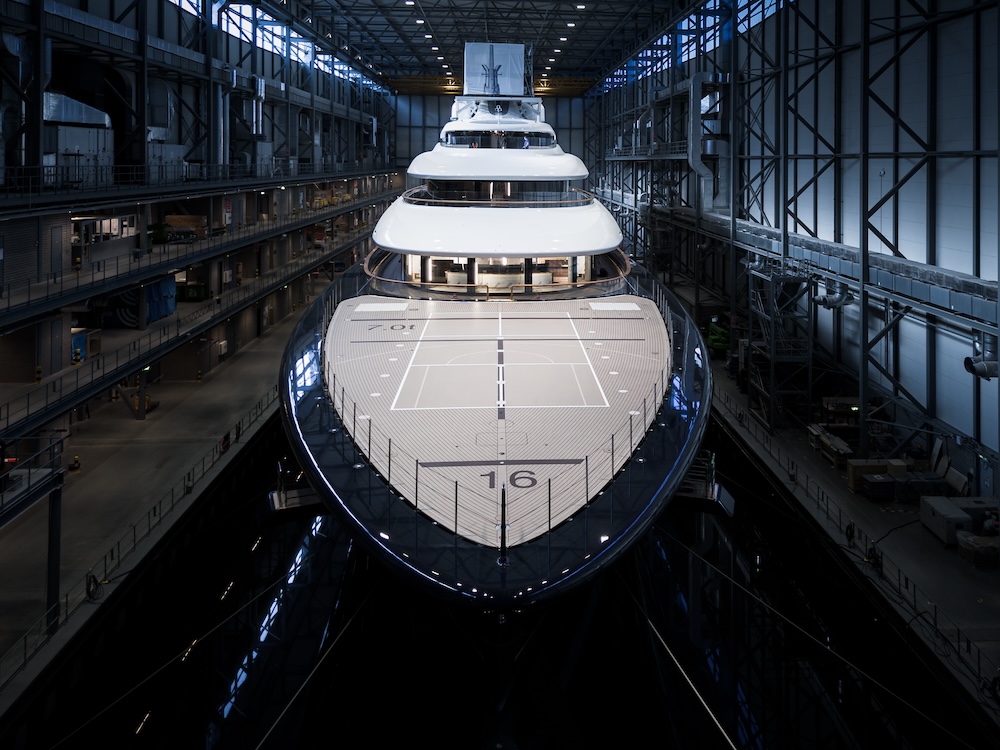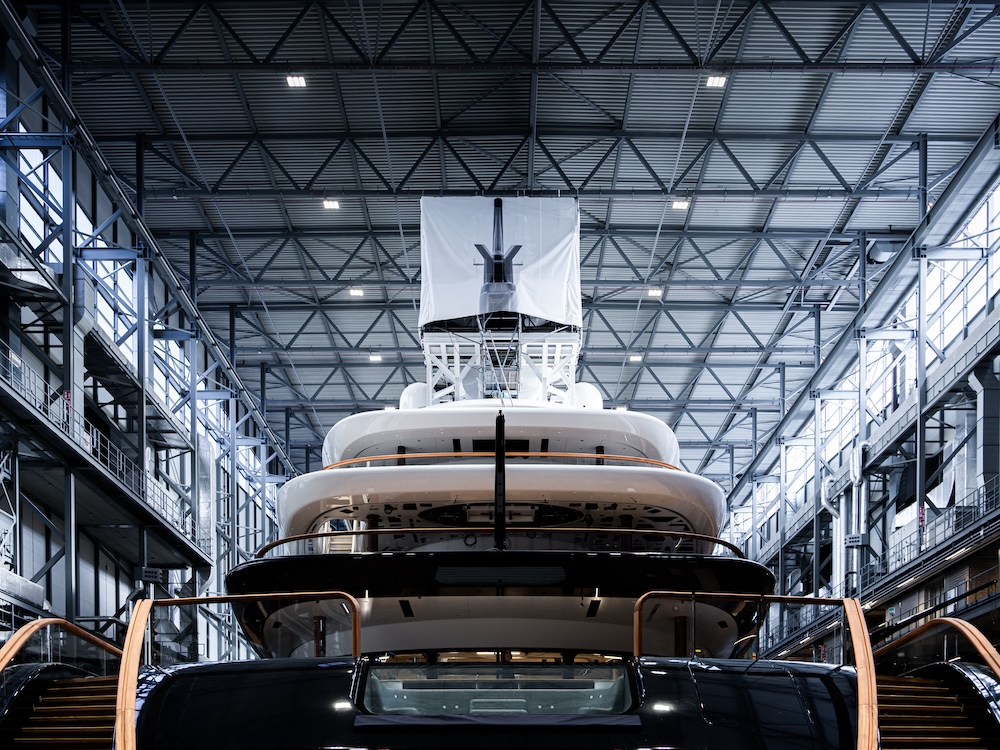Superyachts are notoriously dirty luxury toys, with a single billionaire’s boat emitting as much as 7,020 tons of CO2 per year. And while it’s unlikely uber-wealthy shoppers are going to forgo from their statement vessels anytime soon, at the very least there’s now a chance to make superyachts greener. That’s the idea behind the new Project 821, billed as the world’s first hydrogen fuel cell superyacht.
Announced over the weekend by Danish shipyard cooperative Feadship, Project 821 arrives following five years of design and construction. Measuring a massive 260-feet-long, the zero-diesel boat reportedly sails shorter distances than standard superyachts on the market, but still operates its hotel load and amenities using completely emissionless green hydrogen power.
 The superyacht’s liquid hydrogen must remain in cryogenic tanks cooled to -423.4 degrees Fahrenheit. Credit: Feadshipt
The superyacht’s liquid hydrogen must remain in cryogenic tanks cooled to -423.4 degrees Fahrenheit. Credit: Feadshipt
Hydrogen cells generate power by turning extremely lightweight liquid hydrogen into electricity stored in lithium-ion batteries. But unlike fossil fuel engines’ noxious smoke and other pollutants, hydrogen cells only emit harmless water vapor. The technology remained cost-prohibitive and logistically challenging for years, but recent advancements have allowed designers to start integrating the green alternative into cars, planes, and boats.
There are still hurdles, however. Although lightweight, liquid hydrogen must be housed in massive, double-walled -423.4 degrees Fahrenheit cryogenic storage tanks within a dedicated section of the vessel. According to Feadship, liquid hydrogen requires 8-10 times more storage space for the same amount of energy created by diesel fuel. That—along with 16 fuel cells, a switchboard connection for the DC electrical grid, and water vapor emission vent stacks—necessitated adding an extra 13-feet to the vessel’s original specifications. But these size requirements ironically makes superyachts such as Project 821 arguably ideal for hydrogen fuel cell integration.
 Although emissionless, ‘Project 821’ is still not capable of standard-length voyages. Credit: Feadship
Although emissionless, ‘Project 821’ is still not capable of standard-length voyages. Credit: Feadship
And it certainly sounds like Project 821 fulfills the “superyacht” prerequisites, with five decks above the waterline and two below it. The 14 balconies and seven fold-out platforms also house a pool, Jacuzzi, steam room, two bedrooms, two bathrooms, gym, pantry, fireplace-equipped offices, living room, library, and a full walkaround deck.
Such luxuries, however, will need to remain relatively close-to-harbor for the time being. Project 821 still isn’t capable of generating and storing enough power to embark on lengthy crossings, but it can handle an “entire week’s worth of silent operation at anchor or [briefly] navigating emission-free at 10 knots while leaving harbors or cruising in protected marine zones,” according to Feadship.
[Related: This liquid hydrogen-powered plane successfully completed its first test flights.]
“We have now shown that cryogenic storage of liquified hydrogen in the interior of a superyacht is a viable solution,” Feadship Director and Royal Van Lent Shipyard CEO Jan-Bart Verkuyl said in the recent announcement, adding that “additional fuel cell innovations… are on the near horizon.”
Of course, the greenest solution remains completely divesting from ostentatious, multimillion-dollar vanity flotillas before rising sea levels (and angry orcas) overwhelm even the wealthiest billionaires’ harbors. But it’s at least somewhat nice to see a new eco-friendly advancement on the market—even if it still looks like a Bond villain’s getaway vehicle.

>>> Read full article>>>
Copyright for syndicated content belongs to the linked Source : Popular Science – https://www.popsci.com/environment/hydrogen-fuel-superyacht/































